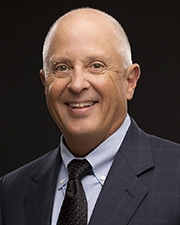As education accountability policies continue to hold school leaders responsible for the success of their schools, it is crucial to assess and develop leadership throughout the school year. In honor of the IES 20th Anniversary, we are highlighting NCER’s investment in leadership measures. This guest blog discusses the Vanderbilt Assessment of Leadership in Education (VALED). The VALED team was led by Andy Porter and included Ellen Goldring, Joseph Murphy and Steve Elliott, all at Vanderbilt University at the time. Other important contributors to the work are Xiu Cravens, Morgan Polikoff, Beth Minor Covay, and Henry May. The VALED was initially developed with funding from the Wallace Foundation and then further developed and validated with funding from IES.
 What motivated your team to develop VALED?
What motivated your team to develop VALED?
There is currently widespread agreement that school principals have a major impact on schools and student achievement. However, at the time we developed VALED, we noticed that there were limited research-based instruments to measure principal leadership effectiveness aligned to both licensure standards and rooted in the evidence base. Prior to the VALED, principal leadership evaluation focused primarily on managerial tasks. However, we believed that principal leadership centered on improving teaching and learning, school culture, and community and parent engagement (often called learning-centered leadership) is at the core of leadership effectiveness.
 What does VALED measure?
What does VALED measure?
The VALED is a multi-rater assessment of learning-centered leadership behaviors. The principal, his/her supervisor, and teachers in the school complete it, which is why VALED is sometimes referred to as a 360 assessment or multi-source feedback.
VALED measures six core components and six key processes that define learning-centered leadership. The core components are high standards for student learning, rigorous curriculum, quality instruction, culture of learning and professional behavior, connections to external communities, and performance accountability. The key processes are planning, implementing, supporting, communicating, monitoring, and advocating.
 How is the VALED different from other school leadership assessments?
How is the VALED different from other school leadership assessments?
The VALED is unique because it focuses on school leadership behaviors aligned to school improvement and school effectiveness, incorporates feedback and input from those who collaborate closely with the principal, includes a self- assessment, acknowledges the distributed work of leadership in a school, and has strong psychometric properties. We think there are several elements that contribute to the uniqueness of the instrument.
First, VALED is based on what we have learned from scholarship and academic research rather than less robust frameworks such as personal opinions and or unrepresentative samples. The VALED was crafted from concepts identified as important in that knowledge and understanding. The VALED model is based upon knowledge about connections between leadership and learning and provides a good deal of the required support for the accuracy, viability, and stability of the instrument.
Second, principals rarely receive data-based feedback, even though feedback is essential for growth and improvement. The rationale behind multi-source or 360-degree feedback is that information regarding leadership efficacy resides within the shared experiences of teachers and supervisors, collaborating with the principal, rather than from any one source alone. Data that pinpoint gaps between principal’s own self-assessment, and their teachers’ and supervisors’ ratings of their leadership effectiveness can serve as powerful motivators for change.
Finally, in contrast to some other leadership measures, VALED has undergone extensive psychometric development and testing. We conducted a sorting study to investigate content validity and a pilot study where we addressed ceiling effects, and cognitive interviews to refine wording. We also conducted a known group study that showed the tool’s ability to reliably distinguish principals, test-retest reliability, convergent-divergent validity, and principal value-added to student achievement. As part of this testing, we identified several key properties of VALED. The measure—
- Works well in a variety of settings and circumstances
- Is construct valid
- Is reliable
- Is feasible for widespread use
- Provides accurate and useful reporting of results
- Is unbiased
- Yields a diagnostic profile for summative and formative purposes
- Can be used to measure progress over time in the development of leadership
- Predicts important outcomes
- Is part of a comprehensive assessment of the effectiveness of a leader's behaviors
What is the influence of VALED on education leadership research and practice?
VALED is used in schools and districts across the US and internationally for both formative and evaluative purposes to support school leadership development. For example, Baltimore City Public Schools uses VALED as a component of their School Leader Evaluations. VALED has also spurred studies on principal evaluation, including the association between evaluation, feedback and important school outcomes, the implementation of principal evaluation, and its uses to support principal growth and development. In addition, it provides a reliable and valid instrument for scholars to use in their studies as a measure of leadership effectiveness.
Andy Porter is professor emeritus of education at the Pennsylvania State University. He has published widely on psychometrics, student assessment, education indicators, and research on teaching.
Ellen Goldring is Patricia and Rodes Hart Chair, professor of education and leadership at Vanderbilt University. Her research interests focus on the intersection of education policy and school improvement with emphases on education leadership.
Joseph Murphy is an emeritus professor of education and the former Frank W. Mayborn Chair of Education at Peabody College, Vanderbilt University. He has published widely on school improvement, with special emphasis on leadership and policy and has been led national efforts to develop leadership standards.
Produced by Katina Stapleton (Katina.Stapleton@ed.gov), program officer for NCER’s education leadership portfolio.